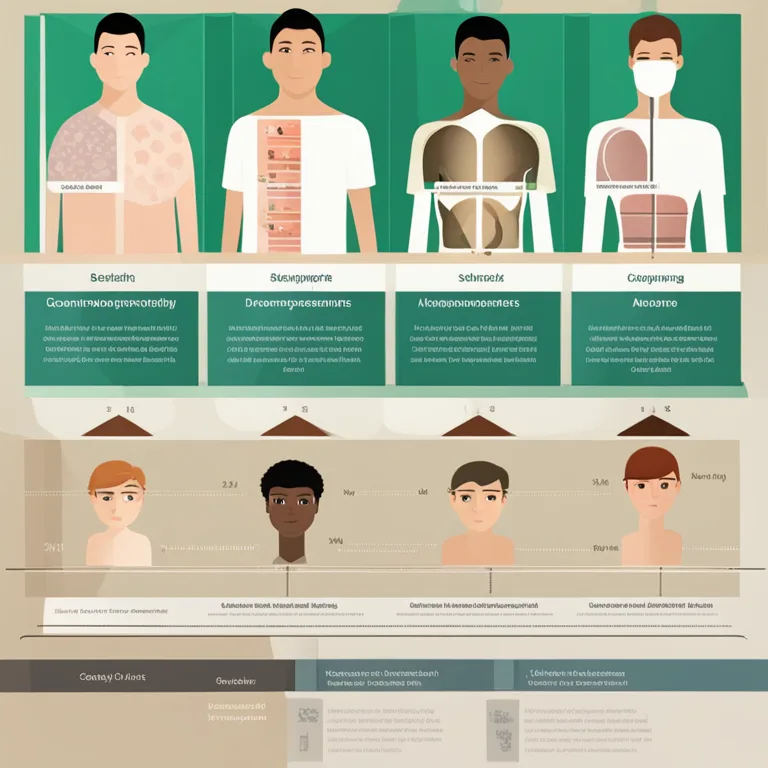
The Origins of Palm Lines: A Scientific Insight
Discover the science behind palm lines in this in-depth article that explores how genetics, prenatal factors, and even movements influence their formation.
article by Nora Pennington
Science Behind Palm Lines
Have you ever looked at the intricate patterns on your palms and wondered what causes them? The creases and lines on our palms, known as palm lines, are a blend of genetic inheritance and environmental factors. Scientific studies suggest that their formation is influenced by a combination of genetic blueprints and factors from our developmental stages. These lines start appearing on the palms of fetuses around the 12th week of gestation and continue to form until the 21st week. Unlike other genetic traits, however, palm lines do not solely depend on inheritance. They are unique to each individual, even in identical twins.

Genetic Influence and Prenatal Development
Palm lines are highly influenced by genetic factors. Scientists believe that certain genes are responsible for the general patterning of these lines. During prenatal development, as the hands form and tissues fold, the lines begin to take shape. Environmental factors in the womb, such as the amount of amniotic fluid and the pressure exerted by the baby's positioning, also play a critical role. These lines are essentially contours that form due to the bending and moving of hands during fetal development, which is why they are present at birth and largely unchanged throughout one's life.

Movements and Flexion Creases
The lines on our palms are technically known as flexion creases. They develop in areas of natural bending and are present to facilitate the movement of the hand. As the fetus moves within the womb, the hands frequently clench and unclench, creating areas of tension where these lines form. After birth, as we continue to use our hands for grasping, these lines deepen and remain a permanent fixture of our palms—a testament to the fundamental relationship between form and function within the human body.

Dermatoglyphics: The Study of Skin Patterns
The study of these patterns on the fingers, palms, and soles of the feet is known as dermatoglyphics. Research in this field has connected various patterns to genetic abnormalities and syndromes, highlighting the medical relevance of these lines. While palmistry, a practice that interprets these lines for personality insights and future predictions, is more art than science, dermatoglyphics provides a scientific basis for understanding how these lines can be connected to our biological makeup.

Relevance to Forensic Science
In forensic science, palm lines hold significant importance. While fingerprints are often the focus of attention, palm prints can also be used in criminal investigations. Their unique patterns help in identifying individuals, and the permanence and immutability of palm lines make them reliable identifiers. With advancements in biometric technology, the scanning and analysis of palm lines have become more sophisticated, providing yet another tool for law enforcement and security professionals.
Cultural and Esoteric Perspectives
Culturally, palm lines are steeped in mysticism. Palmistry or chiromancy, the practice of reading these lines for divination, has been practiced in various cultures for thousands of years. Although the scientific community does not support the predictive nature of palmistry, the fascination with palm lines transcends borders and traditions. People often seek to attribute meaning to their palm lines, viewing them as maps of destiny or personal history.
Published: 1/5/2024
Modified: 1/5/2024
More predictions
Come back here soon to learn more about yourself and your future


The Essence of Palmistry: A Modern Guide
Delve into the modern practice of Palmistry: understanding the lines and shapes of your hands to reveal insights about your personality and future.


The Changeable Nature of Palm Lines
Discover the factors influencing the ever-changing landscape of palm lines and what these modifications could signify in palmistry.


Hand Reading: The Essence of Palmistry
Delve into the basics of palmistry, the ancient art of hand reading, and learn how it aims to reveal personality traits and life paths.